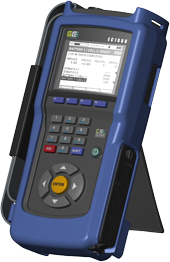Reconditioning
Return your assets to service
Our battery reconditioning process is temperature, voltage and current controlled – delivering a very gentle rejuvenation process – ensuring zero damage to the battery’s internal structure.
We successfully recondition a wide range of lead acid batteries (FLA, VRLA, AGM or Gel) using complimentary technologies to maximise effectiveness and save time and money.






Our technologies
BattMon sensors provide a view into individual battery performance during the reconditioning process – identifying defective batteries.
Thermal imaging identifies areas of concern – whether it be cables, connectors or entire cells.
Digital hydrometers increase frequency and accuracy of Specific Gravity (SG) testing and ensures that SG levels are rebalanced to their optimum.
Dedicated load testers are used to relieve the reconditioning process to improve productivity.
Used in conjunction with our ElectroChemical analysers, these technologies provide a detailed view of individual battery State of Health – before, during and after reconditioning.
Fast facts
- 70% to 80% of lead acid battery failures are due to Sulfation
- Sulfated batteries can be restored up to 100% with the right equipment
- You can save up to 70% revenue spend compared to new battery purchase
- Battery lifespan can be increase up to 100%
Advantages
- Reduced revenue spend
- Reduced financial risk exposure
- Reduced brand risk exposure
- Environmentally friendly
- Critical battery health knowledge in your hands
- Data led recommendations enable effective battery management and procurement strategies

The graph, produced by the reconditioner’s software, displays the capacity increase from “Discharge 1” to “Discharge 4”. An increase of 54% in capacity and restoration back to 95% of original capacity.
Sulfation (PbSO4)
A natural consequence of battery cycling, the build up of lead sulfate crystals on internal plates is exacerbated through inefficient maintenance routines and environmental conditions.
Unchecked, large immovable crystals form reduce the battery’s active material area and increase the battery’s internal resistance – reducing capacity. This results in premature failure at the expense of the owner.
Sulfation aggravators
- Production methods
- Raw material quality
- Lack of maintenance
- Battery inactivity
- Depth of discharge
- Incorrect charging protocols
- Environment conditions
- Usage patterns

The graph, produced by the battery sensor software, indicates a faulty cell during the reconditioning process. This data is invaluable in determining faulty cells very early in the reconditioning process and thus saves time.
